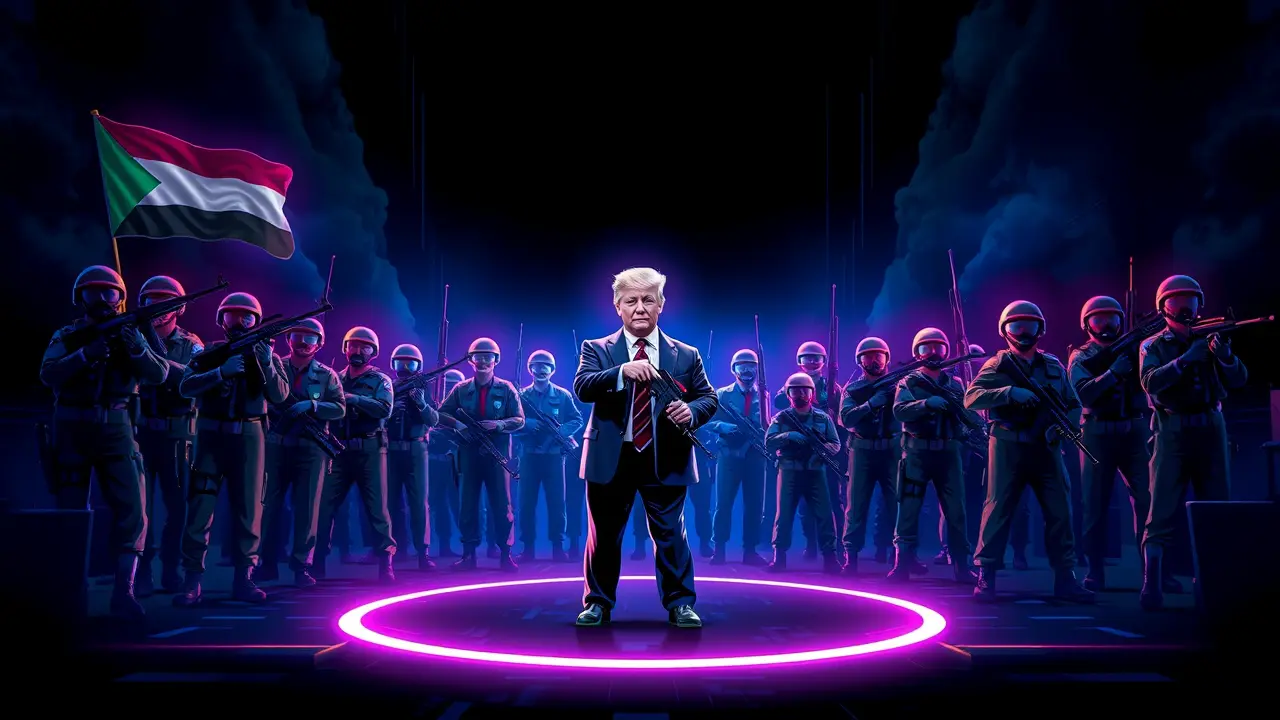Trump demands Hamas disarm or face violent US action.
In a stark declaration that reverberated through the corridors of global power, President Donald Trump delivered an unambiguous ultimatum to Hamas on Tuesday, framing the militant group's future in the binary terms of disarmament or violent confrontation. The President revealed he had directly communicated that Hamas must lay down its arms or face being forcibly disarmed by the United States, a threat he underscored with the chillingly efficient promise that such an operation would be executed 'quickly and perhaps violently.' This moment of high-stakes geopolitical brinkmanship arrives on the precipice of what could have been a fragile peace, following a ceasefire deal personally brokered by the Trump administration that, just a day prior, had seen the last living Israeli hostages freed from Gaza and busloads of Palestinian detainees returned from Israeli custody. Yet, the conspicuous absence of any public commitment from Hamas to demilitarize has left the truce dangerously incomplete, exposing the fundamental fissure that has perpetually undermined peace efforts in the region.To understand the gravity of this standoff, one must look to the long, bloody history of such confrontations, where the disarmament of non-state actors has often been the linchpin upon which entire diplomatic processes have either succeeded or catastrophically failed. The situation echoes historical precedents, from the disarmament of paramilitary groups in Northern Ireland following the Good Friday Agreement—a painstaking, negotiated process—to the more coercive demilitarization campaigns seen in other conflict zones, which often precipitate further violence.Trump’s approach, characterized by its directness and implicit threat of unilateral action, marks a significant escalation in U. S.policy, moving from a traditionally mediated role to that of a potential primary enforcer. This shift carries profound implications, not only for the Israeli-Palestinian conflict but for the broader Middle Eastern strategic landscape, potentially alienating key allies and altering the delicate balance of power.Analysts are now weighing the potential consequences: a forced disarmament campaign could plunge Gaza into an even deeper humanitarian crisis, destabilize neighboring Egypt and Jordan, and provide a potent recruitment tool for extremist elements across the region, effectively undoing any temporary stability gained from the hostage exchange. Conversely, allowing a heavily armed Hamas to remain in control of Gaza perpetuates an enduring security threat to Israel and undermines the legitimacy of the Palestinian Authority, making a sustainable two-state solution increasingly chimerical.Expert commentary suggests that the administration is betting on the threat itself serving as sufficient leverage, a high-risk gambit relying on Hamas’s rational calculation of its own survival. However, the group’s ideology is deeply intertwined with armed resistance, making capitulation a potentially existential threat to its leadership and identity. As the world watches, the question remains whether this is a masterstroke of coercive diplomacy or a prelude to a devastating new chapter in one of the world's most intractable conflicts, a decision that will undoubtedly define Trump’s foreign policy legacy and the future of the Middle East for a generation.
JA
Jamie Larson123k2 days ago
me reading this like 😬 idk man this feels like throwing a match on a gas leak tbh
0
JA
Jamie Larson123k2 days ago
not sure this is as big a deal as they're making it sound tbh feels like we've heard this before
0
